Remove the rear wheel and tire(A) from rear hub(B).
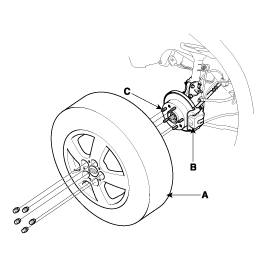
Be careful not to damage the hub bolts(C) then remove the rear wheel and tire(A).
Loosen the wheel nuts slightly.
Raise the rear of the vehicle, and make sure it is securely supported.
Remove the rear wheel and tire(A) from rear hub(B).

Be careful not to damage the hub bolts(C) then remove the rear wheel and tire(A).
Remove the stabilizer bar link mounting nut(A).
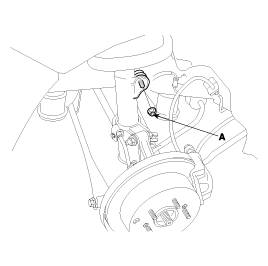
Remove the stabilizer bar mounting bolts(A) and then remove the stabilizer bracket(B).
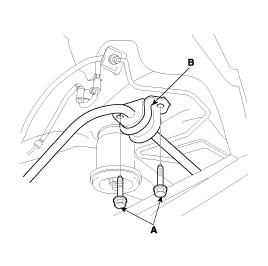
Employ the same manner described above step 3 and 4 to the other side.
Remove the stabilizer bar.
Install the bushing(B) on the stabilizer bar(A).
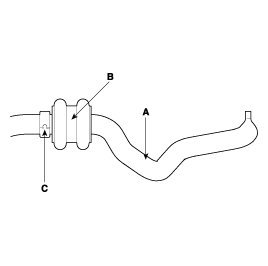
Bring clamp(C) of stabilizer bar(A) into contact with bushing(B).
Install the stabilizer bracket(B) and then install the stabilizer bar mounting bolts(A).

One side bracket should be temporarily tightened, and then install the bushing on the opposite side.
Tightening torque
50~65 Nm (500~650 Kgf·cm, 36.9~48.0 Ibf·ft)
Install the stabilizer bar link mounting nut(A).
Tightening torque
100~120 Nm (1000~1200 Kgf·cm, 73.8~88.5 Ibf·ft)

Employ the same manner described above step 3 and 4 to the other side.
Install the rear wheel and tire(A) on the rear hub(B).
Tightening torque
90~110 Nm (900~1100 Kgf·cm, 66.4~81.2 Ibf·ft)

Be careful not to damage the hub bolts(C) then install the rear wheel and tire(A).
If there is a crack and damage in the dust cover, replace the stabilizer bar link.
Mount the self-locking nut on the ball joint, and then measure the ball joint rotating torque.
Tightening torque
0.7~2 Nm (7~20 Kgf·cm, 0.51~1.54 Ibf·ft)
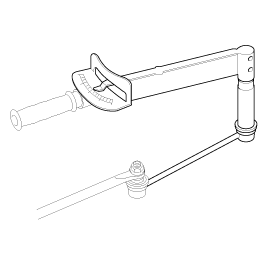
If the rotating torque is above the upper limit of the standard value, replace the stabilizer link.
If the rotating torque is below the lower limit of the standard value, the ball joint may be reused unless it has drag and excessive play.